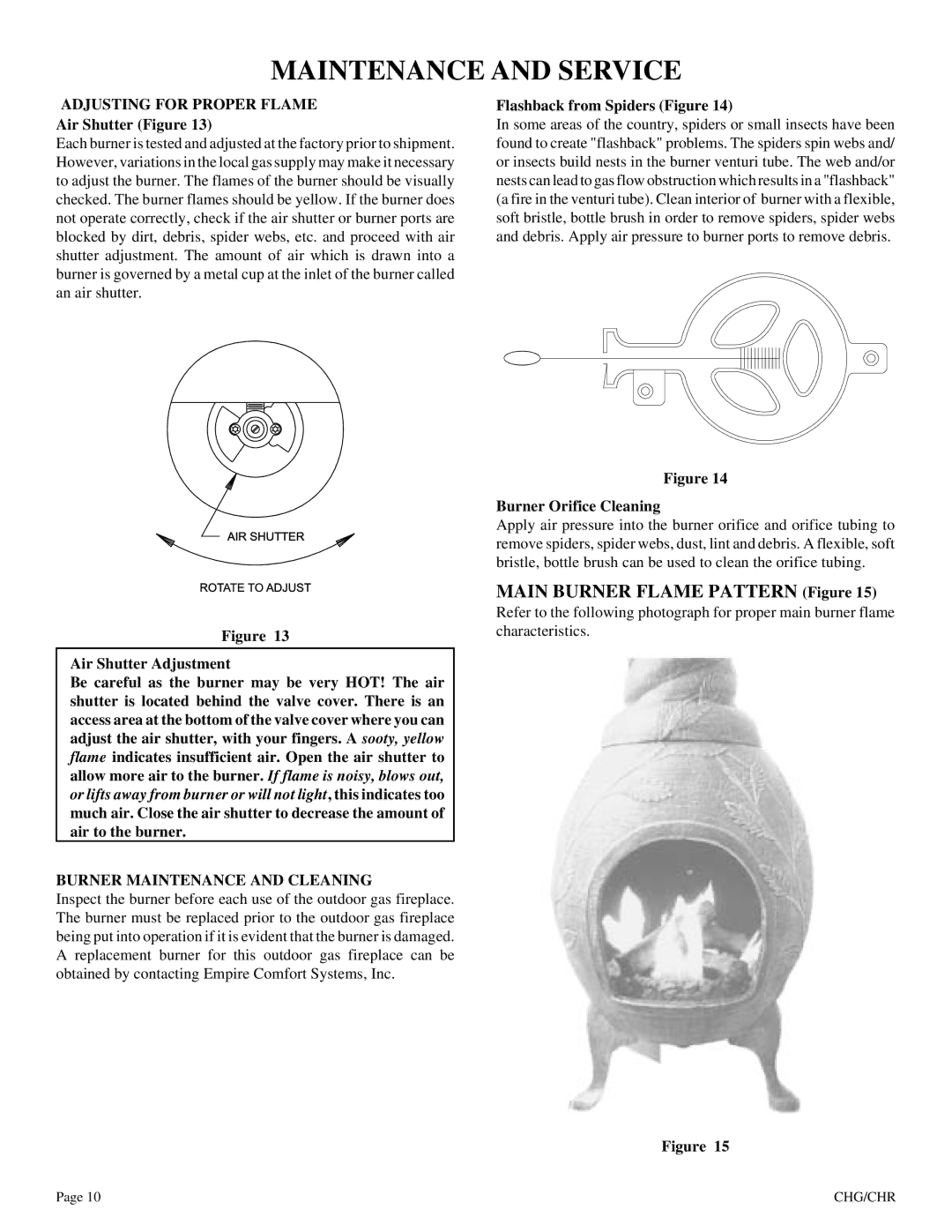
MAINTENANCE AND SERVICE
ADJUSTING FOR PROPER FLAME
Air Shutter (Figure 13)
Each burner is tested and adjusted at the factory prior to shipment. However, variations in the local gas supply may make it necessary to adjust the burner. The flames of the burner should be visually checked. The burner flames should be yellow. If the burner does not operate correctly, check if the air shutter or burner ports are blocked by dirt, debris, spider webs, etc. and proceed with air shutter adjustment. The amount of air which is drawn into a burner is governed by a metal cup at the inlet of the burner called an air shutter.
AIR SHUTTER
ROTATE TO ADJUST
Figure 13
Air Shutter Adjustment
Be careful as the burner may be very HOT! The air shutter is located behind the valve cover. There is an access area at the bottom of the valve cover where you can adjust the air shutter, with your fingers. A sooty, yellow flame indicates insufficient air. Open the air shutter to allow more air to the burner. If flame is noisy, blows out, or lifts away from burner or will not light, this indicates too much air. Close the air shutter to decrease the amount of air to the burner.
BURNER MAINTENANCE AND CLEANING
Inspect the burner before each use of the outdoor gas fireplace. The burner must be replaced prior to the outdoor gas fireplace being put into operation if it is evident that the burner is damaged. A replacement burner for this outdoor gas fireplace can be obtained by contacting Empire Comfort Systems, Inc.
Flashback from Spiders (Figure 14)
In some areas of the country, spiders or small insects have been found to create "flashback" problems. The spiders spin webs and/ or insects build nests in the burner venturi tube. The web and/or nests can lead to gas flow obstruction which results in a "flashback" (a fire in the venturi tube). Clean interior of burner with a flexible, soft bristle, bottle brush in order to remove spiders, spider webs and debris. Apply air pressure to burner ports to remove debris.
Figure 14
Burner Orifice Cleaning
Apply air pressure into the burner orifice and orifice tubing to remove spiders, spider webs, dust, lint and debris. A flexible, soft bristle, bottle brush can be used to clean the orifice tubing.
MAIN BURNER FLAME PATTERN (Figure 15)
Refer to the following photograph for proper main burner flame characteristics.
Figure 15
Page 10 | CHG/CHR |
